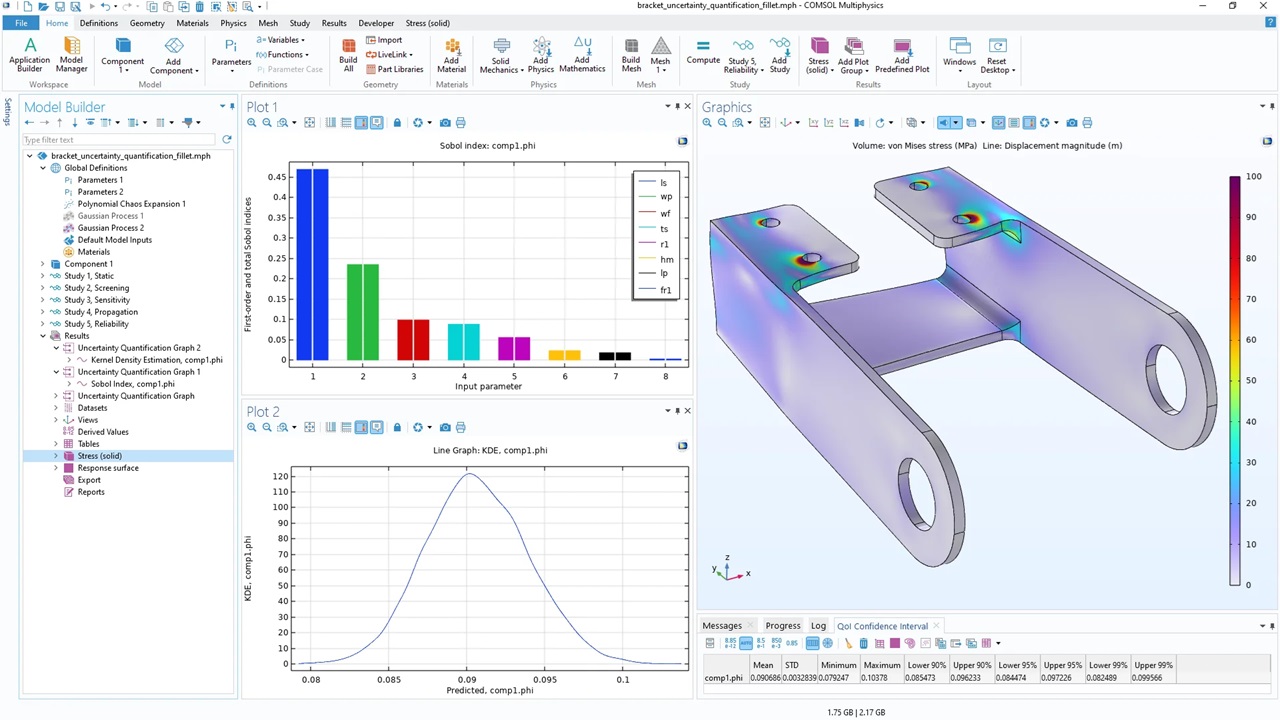
Image made using the COMSOL Multiphysics® software.
Uncertainty Quantification of a Bracket.
Uncertainty Quantification Module helps assess the impact of model uncertainty by analyzing how quantities of interest vary with input changes. It offers tools for screening, sensitivity analysis, uncertainty propagation, and reliability analysis, enabling efficient validation of model assumptions, simplification of models, and identification of key input parameters. By exploring probability distributions and assessing design reliability, it enhances model accuracy, ultimately reducing costs in production, development, and manufacturing. Compatible with the entire COMSOL product suite, it supports uncertainty analysis in electromagnetics, structural mechanics, acoustics, fluid flow, heat transfer, and chemical engineering simulations, and can be integrated with the CAD Import Module, Design Module, or LiveLink™ products for CAD.
This example demonstrates how to use the Uncertainty Quantification Module by running a series of uncertainty quantification studies for a steel bracket. This type of bracket can be used to install an actuator that is mounted on a pin placed between the two holes in the bracket arms. The design objective is that the actuator’s horizontal misalignment, should not be too large.
This example demonstrates how to perform uncertainty quantification analysis of the Ishigami function. This random function of three variables is a well-known benchmark used to test global sensitivity analysis and uncertainty quantification algorithms. The mean, standard deviation, maximum, and mininum values as well as Sobol indices of the Ishigami function can be calculated analytically for the input distributions used here. A separate version of this model is provided which performs a direct Monte Carlo simulation using no add-on products.
The model shows how to calibrate the probability distribution of the Young’s modulus and Poisson ratio based on a tensile test. The test measures the tensile force and the radial displacement for different values of the prescribed displacement. The model is based on synthetic data generated in the model itself. It is considered good practice to test parameter estimation models in this way, before moving on to experimental data.
Uncertainty Quantification is used to study the effect of manufacturing variation on the performance of 2D Solidly Mounted Resonator (2D SMR). This tutorial shows how resonant frequency is effected by thickness variations of the piezoelectric layer and the Bragg reflector layers. The tutorial includes a technique for selecting the correct eigenmode to be used as Quantity of Interest in the Uncertainty Quantification studies.